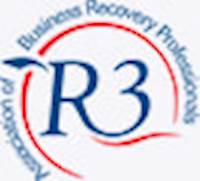As an invited guest blogger of Companies House, we shared the answer to explain the purpose of an administration, going into administration, its end results and situations an administration may be viable for. Plus, pre-pack administration. When a company goes into administration, they have entered a legal process (under the Insolvency Act 1986) with the aim of achieving one of the statutory objectives of an administration. This may be to rescue a viable business that is insolvent due to cash flow problems.
When a company goes into administration, they have entered a legal process (under the Insolvency Act 1986) with the aim of achieving one of the statutory objectives of an administration. This may be to rescue a viable business that is insolvent due to cash flow problems.
An appointment of an administrator (a licensed insolvency practitioner) will be made by directors, a creditor or the court to fulfil the administration process.
The administration puts in place a statutory moratorium. This is a ‘breathing space’ that frees a company from creditor enforcement actions, while financial restructuring plans are prepared to rescue the company as a going concern where possible. This may take the form of a sale to an unrelated party.
If it cannot be reasonably saved, the administrator will aim to achieve a better return for creditors than would be likely if the company were wound up (without first being in administration). For example, the company may continue to trade for a period, while seeking a sale of the business or assets such as:
- goodwill
- trademarks
- patents
- equipment
- the customer database
- software
- content or websites
Or administration can be used to simply liquidate assets and distribute the proceeds to secured or preferential creditors where neither of the first 2 objectives are feasible.
In administration
Once in administration, a company can continue to trade. But daily management and control passes from the directors to the appointed administrator.
Within 8 weeks it is the administrators’ role to formulate administration proposals. Creditors are then asked to vote by a decision procedure to approve the administrators’ proposals.
If the administration involves a sale of all or part of the company’s business, the proceeds (after the costs of the procedure) will be distributed to creditors in a statutory order of priority. There are specific rules regarding distributions however the general order is:
- Secured creditors
- Preferential creditors (employees)
- Unsecured creditors (trade creditors, suppliers, customers, HMRC)
- Shareholders or members
The likelihood of the dividend and its timescale will be in the administration proposals.
It is worth noting that April 2020 may bring changes to the statutory order of creditors as it was recently announced HMRC is to be a preferential creditor with respect to certain taxes.
Administration end
Administration will end automatically after 12 months unless the administrator asks the court or creditors for an extension.
Depending upon the administration proposals the company may have:
- been rescued, and the company passed back to the directors
- gone into liquidation
- been dissolved if the administrator was only able to distribute funds to secured and/or preferential creditors
What is a pre-pack administration?
A company’s main value may relate to assets such as goodwill or the company’s brand which would be significantly reduced once the company entered into an insolvency procedure. This can reduce the chances of business rescue. As such, the practice of pre-packaged administration has evolved.
Prior to administration, and where potential purchasers for a business and assets are readily identified, a sale of all or part of the company’s business and assets can be negotiated with the sale being completed immediately or shortly after the company goes into administration.
The insolvency practitioner will advise the company about obtaining appropriate valuations, marketing of the business, agree sale prices and assist in drafting contracts all ready for the appointment of the administrator – a pre-pack.
Statement of Insolvency Practice 16 (SIP 16) requires administrators to report the full facts of the pre-pack administration to creditors within 7 days of the transaction.
Purchasers may be directors, shareholders or others connected with the insolvent company.
Administration, pre-packs and insolvency
For companies with real financial difficulties, administration is not necessarily an end to a business but an opportunity for a company to continue in whole or in part as a new going concern, as demonstrated by this administration case study.
If a company goes into administration and the business can be saved, some jobs can be preserved.
A pre-pack administration can be particularly useful to ensure that the value of the business is preserved.
So, consider a company administration when:
- there are severe cash-flow pressures but the business is fundamentally viable
- there’s a need to quickly sell the business as it’s technically insolvent
- creditors won’t agree to a company voluntary arrangement (CVA) or it’s not possible within the immediate time frame



